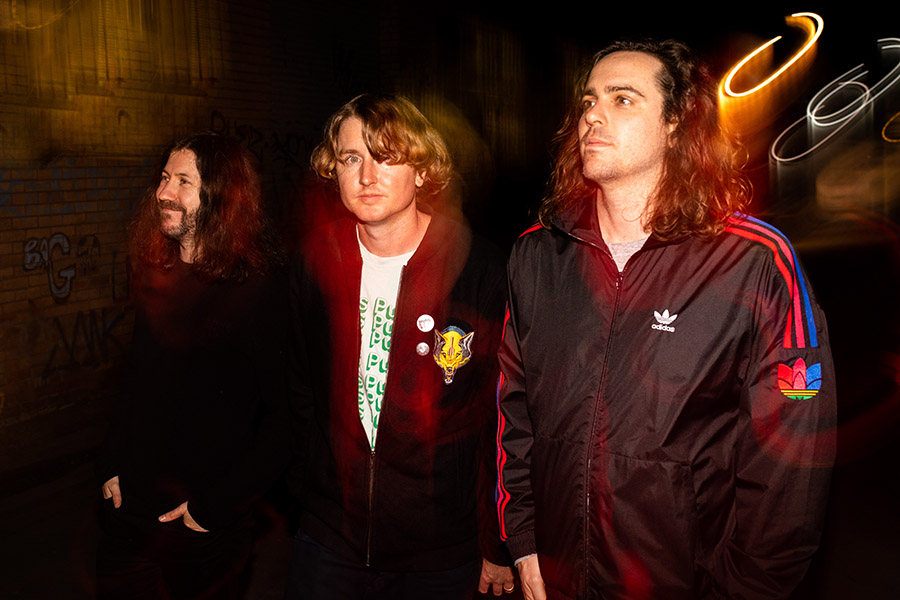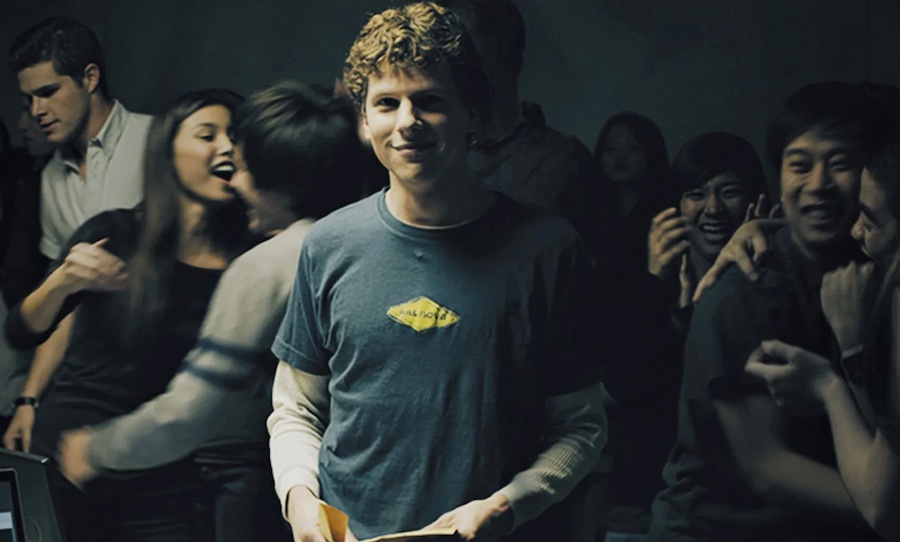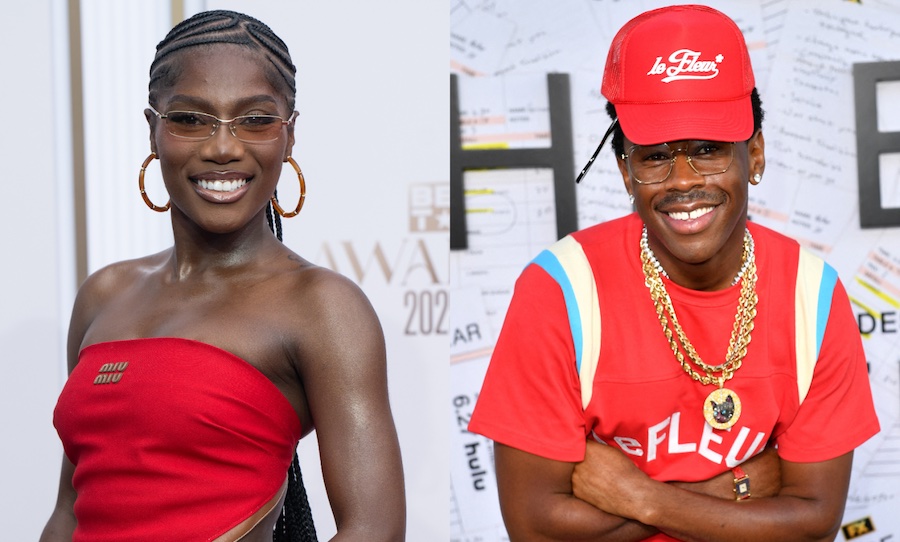While Positive Rising: Part 1 saw DZ Deathrays solidify themselves as a punk-rock force to be reckoned with, their Part 2 pushes the envelope further.
With songs all written in the same period, it’s hard to create a continuation album that still feels relevant, and contextualised. DZ Deathrays’ trio – Shane Parsons on vocals and guitar, Lachlan Ewbank on lead guitar and vocals, and Simon Ridley on drums – have managed to avoid these pitfalls altogether.
If Positive Rising: Part 1 was DZ Deathrays’ bid for traditional punk-rock perfection, Positive Rising: Part 2 is the wilful destruction of that concept. Stunning climactic guitar riffs, and cuttingly nostalgic punk vocals nod to their Part 1 their predecessor, but exist in their own darker, intimate universe.

In light of this impressive continuation, Happy got the chance to sit down with Shane, to chat about Positive Risings, artistic accessibility, and the strange future ahead.
HAPPY: So I really wanna talk about Positive Rising: Part 2. This album totally slaps! It’s definitely a lot more moody and maybe ‘emo’ compared to Positive Rising: Part 1, and I just wanted to know what inspired this stylistic change?
SHANE: Yeah! I don’t know if it was a change, because all the songs were actually written at the same time. It was more that these songs sort of, we kinda put some for part 2, and we kept working on a few others, and then we had whatever we had for part 1 and we went and recorded it at that time. So, it wasn’t a definite directional thing, but it did sort of work out quite nicely, because the artwork goes from sort of daylight to nighttime, and part 2 is a bit more, I guess, darker and moodier. But yeah, it wasn’t intentional, it just ended up that way, which kinda like a most things in this band – we kinda go for it and see where it ends up.
HAPPY: Yeah! Well, I am obsessed with Kerosene! I was wondering if you could give me a bit of context about it? How did it all come together?
SHANE: Yeah! So that was one I wrote with Kim Moyes from The Presets, and I was at his house, we did a writing session, and we wrote maybe like eight different ideas, and two of the ideas I sort of ended up fleshing out into proper songs. One of those was Still No Change, which is on Part 1, and Kerosene. And, essentially, we used the drum beat you can hear at the start, that’s from the demo session that we did. And then, it just took a fair bit of moulding and getting it to sort of feel right. I had this old, old song which was called Adrenaline, so I sort of took some of the lyrics from that and then morphed it into this song and built this track called Kerosene. What it’s sort of about? It’s sort of about always looking at other people, I guess I get pretty obsessed with the idea that we’re just sort of all living online so much these days, and always seeing what’s happening, and it’s that thing of ‘oh, that grass is always greener when you’re looking outside’. But, then the chorus then supposed to flip and say ‘whenever you’re ready to make a change, I’m here, ready to go’. It’s pretty open-ended in general, lyrically, but it’s sort of a funny one because it’s a mashup of two songs together to build this one idea. But hopefully, it means something to someone, and they get some enjoyment out of it, can listen to it, and think ‘oh, that means something to me.’
HAPPY: Yeah! This is something I’ve heard before, but there’s a lot of nostalgia with DZ Deathrays. It really calls back to 200s punk – is that something you’d agree with, or something you’re going for?
SHANE: I don’t think we’ve ever really gone for certain sounds, but it’s definitely something that’s in my blood! I’m a little bit older these days, and some of my formative years in music were sort of early 200s, mid 2000s because I finished school in 2003. So, 2004, 5, 6 and 7 were my university days, and I was really REALLY impressionable with bands at that time, and I still find myself going back to those records, because they just have a special place in my heart in some ways. Just listening to them and being like ‘Oh yes! There’s something about this’. It got me then, it still gets me now. I always go back and listen to the early Bloc Party album, because they were such a big thing for me, and I still really love to listen to them. So yeah, it’s cool that sort of finds its way through, but it’s never intentional to be like ‘we need to sound like this’. We just write songs, and it’s however it comes out. There’s three people in the band now writing, so it’s always a clash of these things in the mixing bowl, and then what you get out of it is ways quite interesting, because we always try to embrace everyone’s ideas, and make them work together.
And, I did find before doing the Positive Rising Part 1 and 2, we had finished Bloody Lovely and I did find that I was starting to like, recycle my own ideas so much. So, when we got Lachie to come write with us, and send ideas through, and started to put together ideas that were based of his ideas, and then ones that are based off mien and vice-versa, it really opened me up in terms of developing my ear to be able to hear thing slightly differently.
As musicians and writers, you definitely have a certain thing of ‘that sounds right to me, that sounds good to me,’ and it’s really good to then break of that and be like ‘oh no, that chord progression that you’d never do, you’re now doing it’ and you fall in love with it because it sounds so strange to you initially, that you end up falling in love with it. I found a lot of that in doing these two albums.
HAPPY: I love that idea of taking an exquisite-corpse approach to creating music. Were there any parts though where you were like ‘fuck, this isn’t gonna work’ and then you ended up pushing through and it just finally became something amazing?

SHANE: (laughs) Yeah it’s funny! All Or Nothing took so long to write, and initially it was pretty much what it is now, but I re-wrote it about six or seven times, in different keys, and different arrangements, to find where it would fit. We get feedback from friends and, like I OH YOU, like Johann is always good to give some feedback. Sometimes it was always like ‘it just feels like it’s two songs’, and I was like ‘yeah I know, but I kinda like that it sounds like two songs!’. It almost has a key change, so I went and I worked it and worked it, and we ended up landing back at square one which is where we started. But, it was very therapeutic to go through that whole process and just make sure that what we were doing was definitely the right choice.
Fired Up also took a really long time to get right, and it was more of a thing of simplifying, simplifying and simplifying. I think when I first wrote the song, I had all these different parts, and different arrangements, and different progressions, and in the end it was like ‘let’s just bring it down to it’s core thing, be able to play it on an acoustic guitar, and we’ll build it up from there. So that took a little while to get going, but I live for that stuff! (laughs)
HAPPY: Yeah! Speaking of Fired Up, I watched the music video today… what the fuck?
SHANE:(Laughs) Yeah! It’s so weird! I think we gave him some… we sent over some ideas of what we wanted, and because it was done last year during lockdown… we couldn’t all be together to do something. So, we were like ‘we want science fiction, we want space, we want 80s’. So that’s how it came out. I love it. I love the way it looks, and it takes on this strange story, and I think there was one part we really wanted to add to it, which we never go to. Originally, Fired Up and Riff City, were one song. I was like ‘If I’m gonna have this big Springsteen-style thing, I wanna bring it in big riff to take it home to old school DZ’. But, obviously everyone was like ‘you can’t do that, because it’s too long’. So, we ended up splitting it up. But, yeah, the idea of sort of like, futuristic teleportation through space and time, and ending up at a place called ‘Riff City’. It’s a bit of fun, but it’s just this idea of a future world where… rock is still fun (laughs).
HAPPY: (laughs) Very meta!
SHANE: Yeah!
HAPPY: I also wanted to touch upon this partnership that you’ve set up with Fender. I think it’s really interesting that you’re trying bring accessibility into music. It’s something that isn’t talked about enough, but music can be really gatekeeping sometimes. I wanted to ask what this partnership means, and why it’s important to bring accessibility into music?
SHANE: Yeah! We were talking about doing something like this for a while. Simona and I both grew up in a smaller town in Queensland. We had a music store there, but you know, there wasn’t much there. But also, like affordability as well. Being able to afford something when you’re a kid is super hard. SO yeah, we worked with Fender, and we were like ‘what can we do, to get some guitars in hands around Australia, in regional places especially’. To be honest, I was really overwhelmed with the response. So many kids, writing in just saying that they’re either playing guitar now, or they want to take it to the next level. One of the questions was ‘who’s your favourite guitarist of all time?’ And, so many were guitarists that I’d never heard of. Old school guitarists that maybe their dad or someone listened to, and they were really influenced by that. So, I really liked that idea that people were still really influenced by the past, these younger kids, and it’s just a really nice thing to do – and see brands like Fender jump on board. Ya know, it’s good thing for them to get guitars out to kids, and amps out to kids, and hopefully we get to see some of these kids out there playing in bands at some point.
Playing guitar for me when I was a kid a huge part of my growing up and I did it every day. I never had lessons or anything like that. I just had an acoustic, and I’d just go sit in my room or in my backyard and just play all afternoon, so it was really good escapism for me. So, I understand there’s a lot of kids out there who need that escapism, and hopefully music can give that to them.
HAPPY: Wait, you taught yourself to play guitar?

SHANE: Yeah! I had some friends who played, so that’s how it started. ‘You show me how to play that song,’ and then I’d just practice it. I actually started writing music pretty much as I could play a note. I was like ‘ok, that’s a song now,’ and it’d just be three notes (laughs)
That was my way of learning was just to learn via ‘that sounds good’ and doing that. So, I’m actually not a very technical guitarist, but I’ve always been obsessed with it and loved it, and when you’re obsessed with something, that’s when you can do it for your entire life I feel weird if I haven’t picked up a guitar in a week. I’m just like ‘oh, something’s wrong’. I do it everyday, even for like 10 minutes, I just play. I’ve started trying to learn piano as well, and I’m doing a similar thing. Playing things until it sounds good, and learning chords and stuff like that – it’s very therapeutic.
HAPPY: Is this a lockdown activity you’re testing out?
SHANE: I’ve always wanted to, and piano and songwriting go hand in hand. A piano is the most true sense of notes and melody. So, if you can break it down into melodies on a piano, everything sounds so much more beautiful, but you’re also like ‘oh! I know exactly what I’m trying to sing now’. You might be all over the shop in terms of your melody, and trying to work it out, but then you work it out on a piano, and you think ‘that’s what I’m trying to do’. It’s just an important tool to learn, and I’m just doing so much songwriting these days, but I need to get my head around the piano.
HAPPY: Shit. We’ve gotta wrap up, but I just wanted to ask about Fear The Anchor. I understand the song is about systemic hatred, but I also love the lyricism – it’s so bizarre!
SHANE: Yeah! Some of my lyrics are bizarre. A lot of the time I’ll write something and I‘m like ‘it sorta means that, but it could also mean this’. I try and not write songs that are completely on the nose, I want it to feel poetic, and that you can take away whatever you want. All of these songs, it’s funny because in interviews people say ‘oh, it’s so funny that it resonates with the COVID thing’ – these were all written ay before COVID!
I guess we were getting a lot of the Trump thing. I was in America the day he was elected. It was interesting to see that unfold, and the heartbreak of people there and the way the media reacted to a lot of it. it’s really about the fear-mongering that happens. Maybe because I’m older and I see more of it, and because people are calling it out a lot more now, that you’re more aware it’s happening.
It was interesting being in the States at that time and just seeing it unfold. But yeah, that one is about being mindful of what the news is telling you, and the twists and turns it could be displaying for you that might not be true. And yeah, the general theme mongering and hatred you can see among some news reporters, and papers, and everything else like that – try to be mindful and open-minded.

HAPPY: Well, thank you so much for chatting to me! Enjoy lockdown and be safe!
SHANE: Thank you so much, have a good day!
Positive Rising: Part 2 is out now on all streaming services!
Interview by Mike Hitch
Photos by Sean McDonald, Marcus Coblyn, Yasmin Suteja and Michelle Vincze



